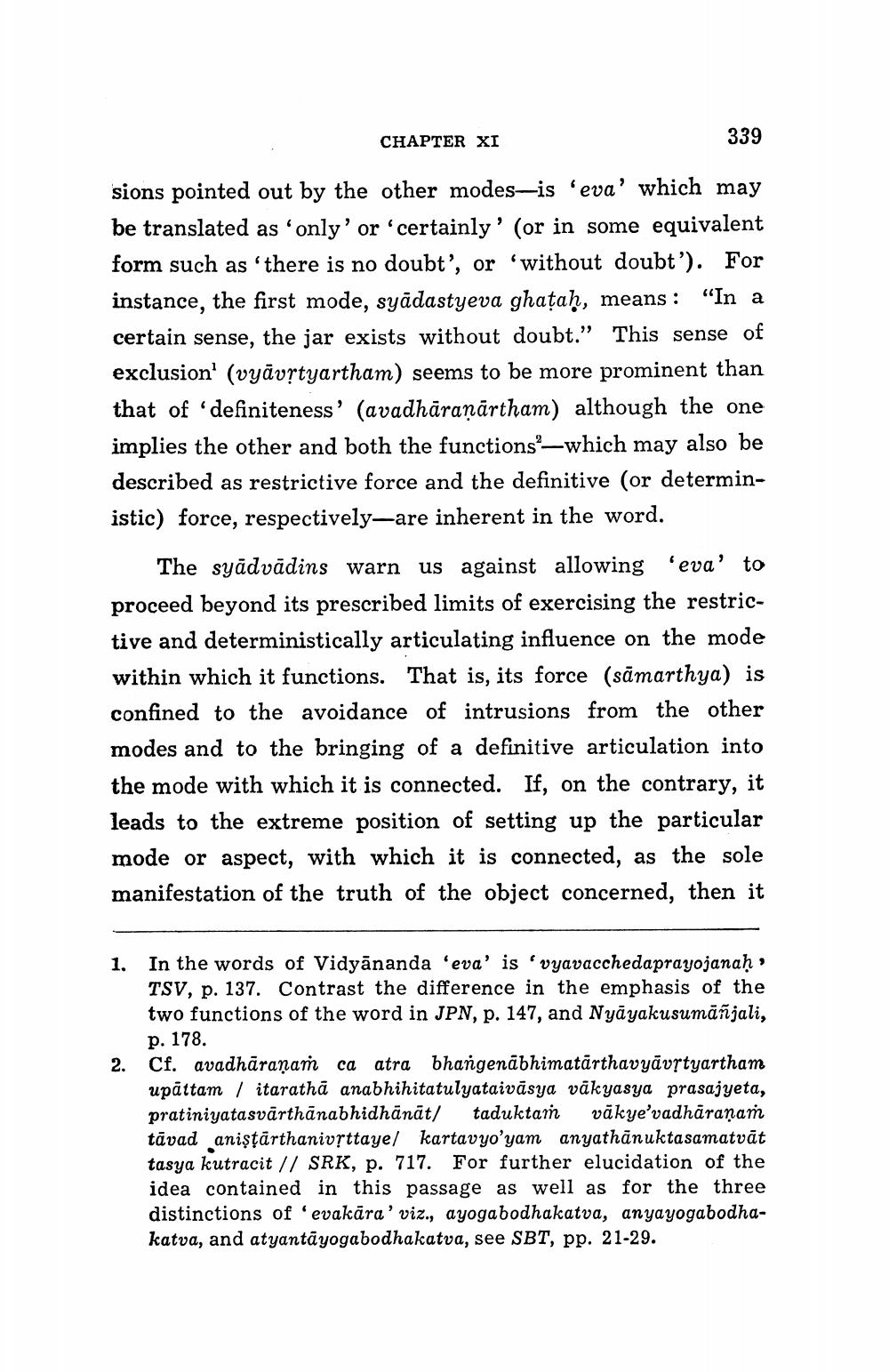________________
CHAPTER XI
339
sions pointed out by the other modes—is 'eva' which may be translated as 'only' or 'certainly' (or in some equivalent form such as there is no doubt', or without doubt'). For instance, the first mode, syādastyeva ghataḥ, means: "In a certain sense, the jar exists without doubt." This sense of exclusion' (vyāvștyartham) seems to be more prominent than that of definiteness' (avadhāraṇārtham) although the one implies the other and both the functions—which may also be described as restrictive force and the definitive (or deterministic) force, respectively—are inherent in the word.
The syādvādins warn us against allowing 'eva' to proceed beyond its prescribed limits of exercising the restrictive and deterministically articulating influence on the mode within which it functions. That is, its force (sāmarthya) is confined to the avoidance of intrusions from the other modes and to the bringing of a definitive articulation into the mode with which it is connected. If, on the contrary, it leads to the extreme position of setting up the particular mode or aspect, with which it is connected, as the sole manifestation of the truth of the object concerned, then it
1. In the words of Vidyānanda 'eva' is 'vyavacchedaprayojanaḥ,
TSV, p. 137. Contrast the difference in the emphasis of the two functions of the word in JPN, p. 147, and Nyāyakusumāñjali, p. 178. Cf. avadhāranaṁ ca atra bhangenabhimatarthavyāvștyartham upáttam / itarathā anabhihitatulyataivāsya vākyasya prasajyeta, pratiniyatasvārthānabhidhānāt taduktam vākye'vadhāranam tāvad aniştārthanivịttayel kartavyo'yam anyathānuktasamatvāt tasya kutracit // SRK, p. 717. For further elucidation of the idea contained in this passage as well as for the three distinctions of 'evakāra' viz., ayogabodhakatva, anyayogabodhakatva, and atyantāyogabodhakatva, see SBT, pp. 21-29.




